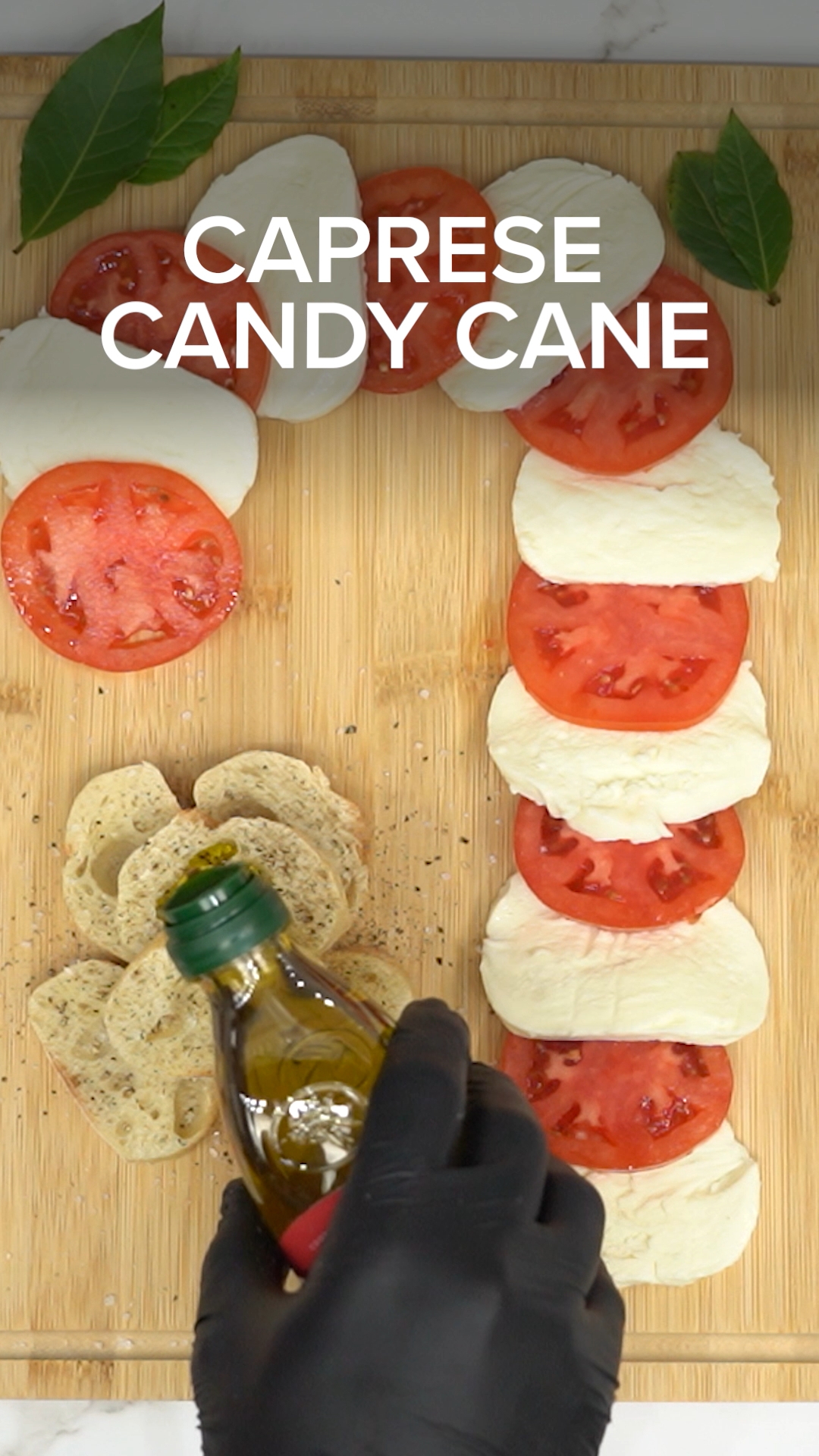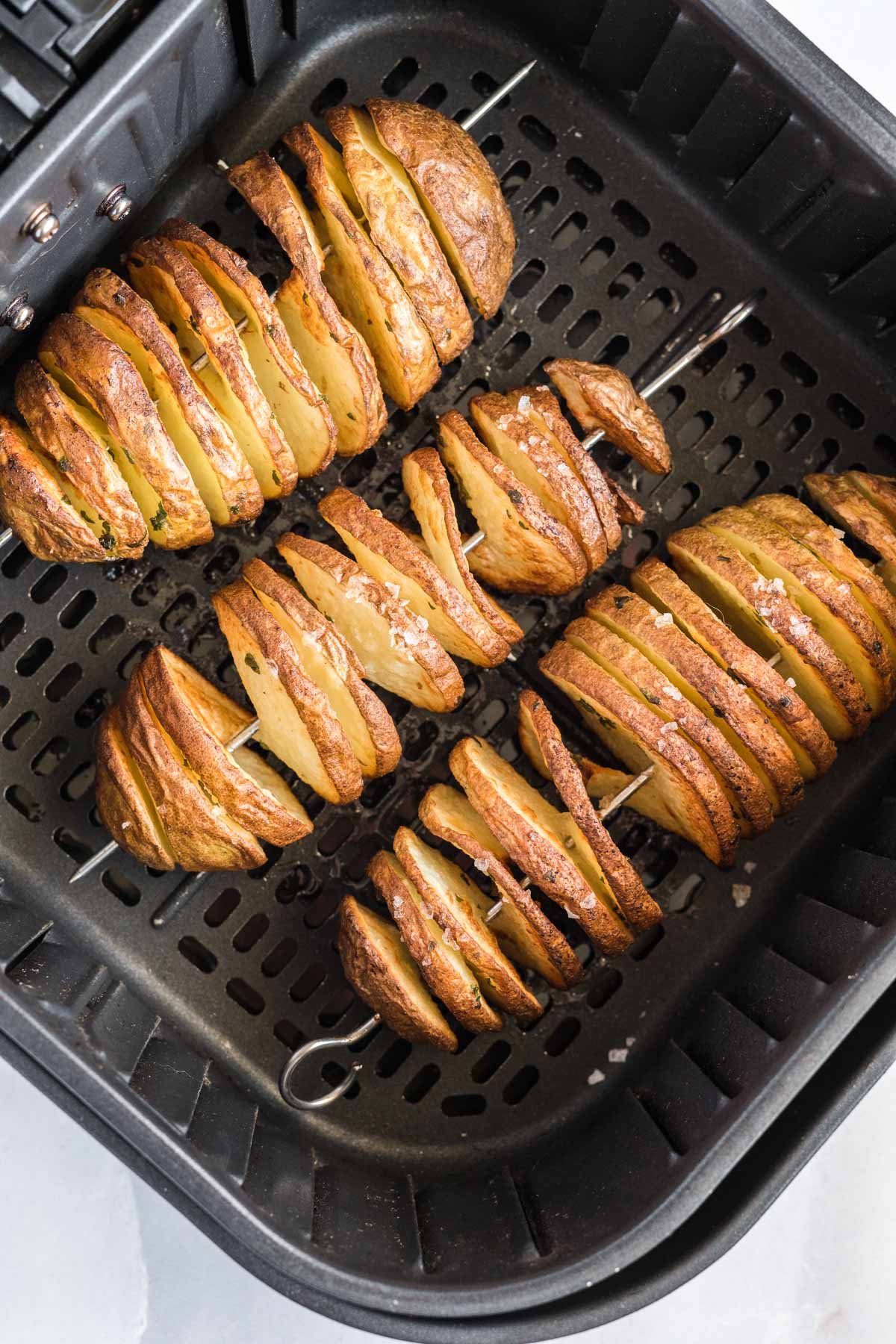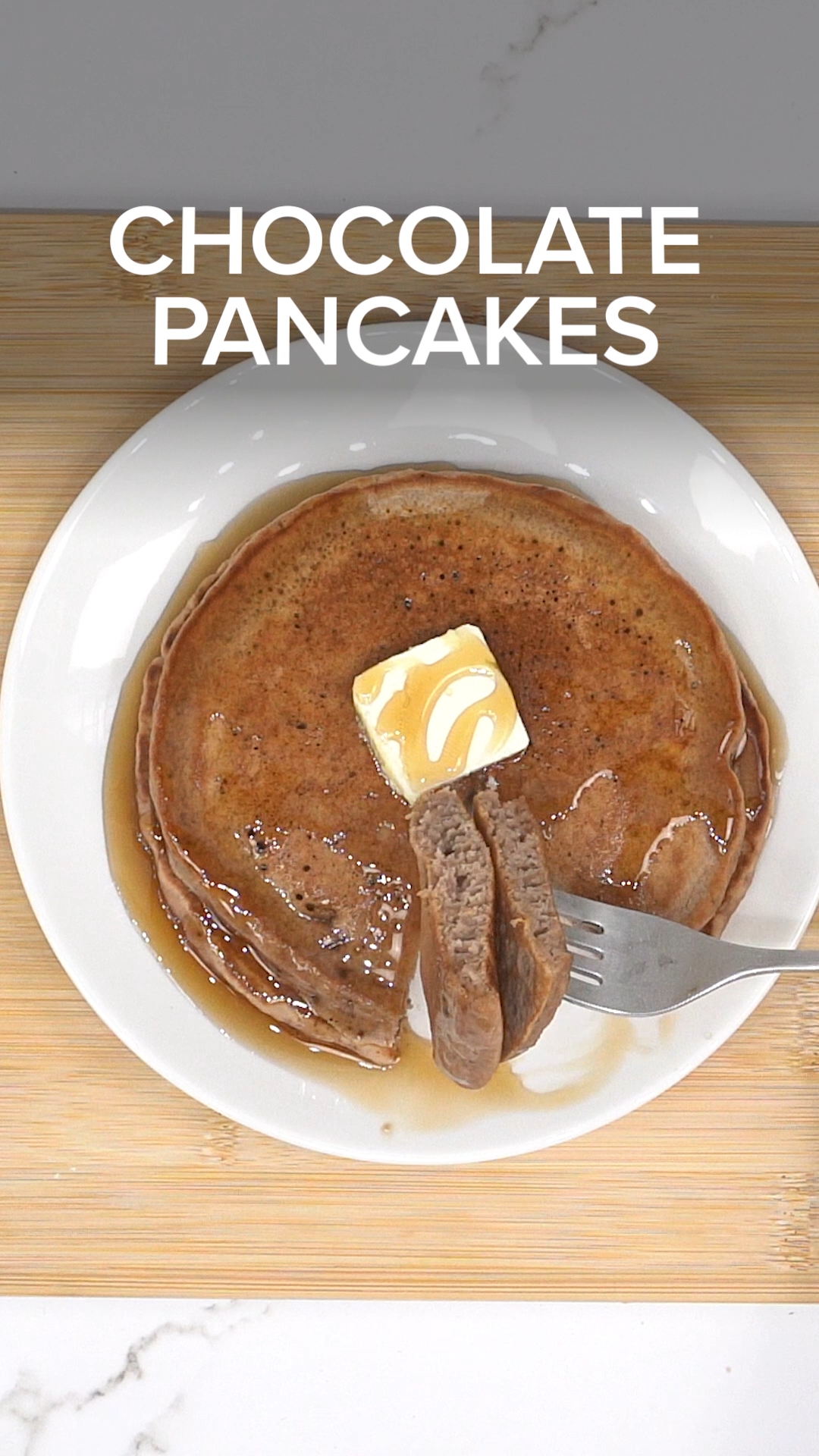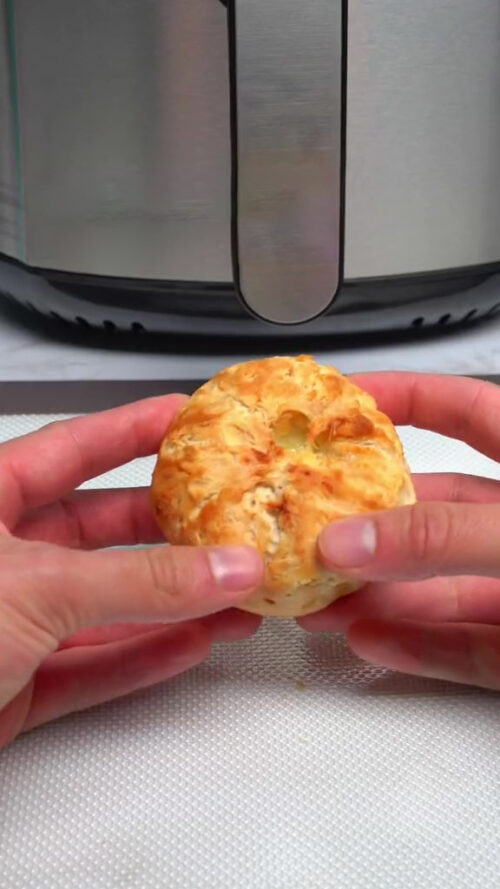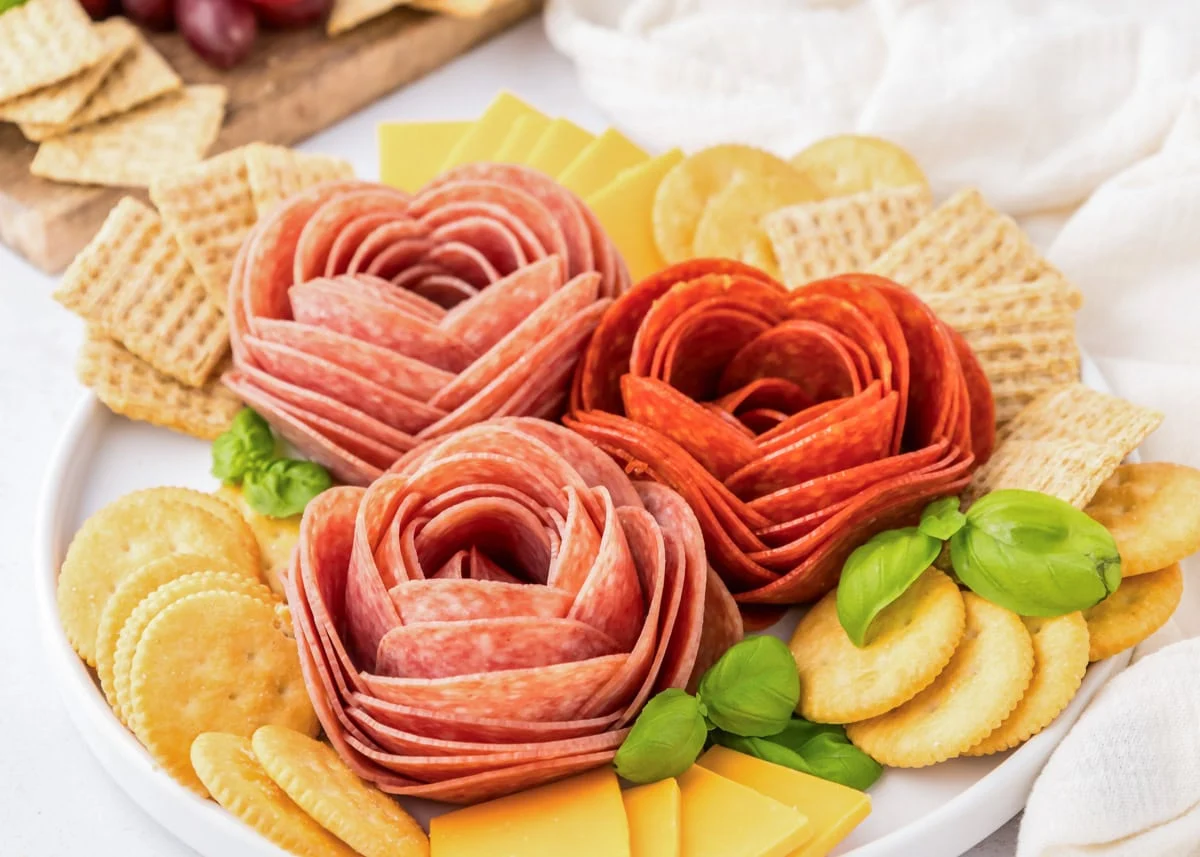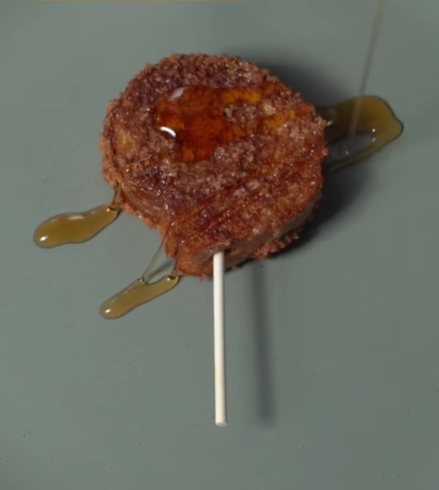Caprese Candy Cane: A Festive Holiday Appetizer
Spiral potatoes have taken social media by storm, and holiday appetizers are following the same trend. This Caprese candy cane transforms classic Italian flavors into a festive presentation that’s visually stunning and surprisingly easy to make at home. These candy cane-shaped appetizers arrange fresh mozzarella, ripe tomatoes, and fragrant basil into accordion-style treats perfect for holiday gatherings. With just a few simple ingredients and basic assembly, you can create restaurant-quality presentations that are creamy, fresh, and beautifully festive. What makes this recipe so appealing is the dramatic presentation combined with simple execution. The candy cane shape creates visual impact while the classic Caprese flavors deliver familiar taste that everyone loves. The toasted bread component ensures guests can enjoy the appetizer without mess while keeping the preparation stress-free for hosts. Why This Caprese Candy Cane Works So Well Simple assembly revolutionizes how holiday appetizers come together by requiring no cooking skills beyond toasting bread. The candy cane shape creates maximum visual impact while the straightforward ingredient list keeps shopping and prep minimal. Fresh ingredients do all the heavy lifting in this recipe. Unlike complicated appetizers requiring multiple cooking steps, this one relies on quality components arranged thoughtfully. The combination of creamy mozzarella, juicy tomatoes, and aromatic basil needs nothing more than good olive oil and proper seasoning. Quick preparation time of just 15-20 minutes total makes this Caprese candy cane ideal for busy holiday schedules. You can toast the bread while arranging the other components, getting impressive appetizers on the table faster than most recipes require. Minimal cleanup represents a major advantage since you’re not dealing with multiple cooking vessels or complicated techniques. One baking sheet for the bread and one serving board for assembly means easy post-party cleanup. Versatile presentation options mean you can adapt this recipe to different serving situations, from casual family gatherings to elegant dinner parties. The self-serve format works beautifully for both sit-down meals and standing cocktail parties. Make-ahead friendly components allow you to prep ingredients hours before guests arrive. Toast the bread and prep the vegetables earlier, then assemble the candy cane shape right before serving for maximum freshness and visual impact. Choosing the Right Ingredients Simple ingredients make this Caprese candy cane accessible, but making smart choices about each component significantly improves your results while accommodating different preferences and dietary needs. Bread Selection: French baguette provides the ideal base with its crispy crust and airy interior. Choose a fresh baguette from your bakery rather than pre-sliced bread for better texture and flavor. The bread should be firm enough to hold toppings without getting soggy. Tomato Choice: Medium-sized tomatoes work best for slicing into uniform rounds. They should be ripe but still firm to hold their shape during assembly. Roma tomatoes offer consistent size, while heirloom varieties provide interesting colors and flavors. Mozzarella Type: Fresh mozzarella packed in water or whey delivers the authentic creamy texture this recipe needs. Avoid pre-shredded mozzarella, which contains anti-caking agents that prevent proper melting and don’t provide the right texture. Look for it in the specialty cheese section. Basil Freshness: Fresh basil brings aromatic quality that dried herbs simply cannot match. Choose bright green leaves without brown spots or wilting. If your basil leaves are large, you’ll tear them into smaller pieces for better distribution. Oil Quality: Extra virgin olive oil adds richness without overwhelming the other ingredients. Since it’s not being cooked, the flavor comes through clearly. Choose an oil you’d happily dip bread into on its own for best results. Seasoning Components: Sea salt or kosher salt provides better flavor than table salt. Freshly ground black pepper delivers more punch than pre-ground versions. These simple seasonings enhance without masking the fresh ingredient flavors. Ingredients You’ll Need Main Ingredients: Optional Additions: Step-by-Step Preparation Technique Success with this Caprese candy cane comes from proper ingredient preparation and understanding the assembly process that ensures both beautiful presentation and practical serving for guests. Bread Preparation: Preheat your oven to 375°F. Slice the French baguette into ½-inch thick pieces on a slight diagonal for larger surface area. Arrange slices on a baking sheet in a single layer without overlapping. Toasting Process: Place the baking sheet in the preheated oven for 8-10 minutes, checking halfway through. You want golden-brown edges with crispy texture throughout. The bread should be firm enough to hold toppings without bending but not so dark it tastes burnt. Tomato Slicing: While the bread toasts, wash and dry your tomatoes thoroughly. Slice them into ¼-inch thick rounds using a sharp knife. Uniform thickness ensures even presentation and makes assembly easier. Discard the end pieces or save them for other uses. Mozzarella Preparation: Drain the fresh mozzarella and pat it dry with paper towels. Excess moisture makes your presentation watery and causes the bread to get soggy. Slice the mozzarella into pieces similar in size to your tomato slices for balanced flavor in each bite. Board Selection: Choose a large cutting board, serving platter, or wooden board that provides enough space for your candy cane shape. The board becomes part of your presentation, so select something attractive that complements your table setting. Creating the Candy Cane Shape: Start at one end of your serving board and begin alternating mozzarella and tomato slices in a curved line that resembles a candy cane. Overlap each slice slightly so they create a continuous pattern. The overlapping helps everything stay in place and creates visual flow. Layering Technique: Place a slice of mozzarella, then a tomato slice, then mozzarella again, continuing the pattern. Angle each piece slightly to follow the curve of the candy cane shape. Don’t worry about making it absolutely perfect – slight variations add to the handmade charm. Seasoning Application: Once your candy cane shape is complete, season the entire arrangement with sea salt and freshly ground black pepper. Be generous but not excessive – you want to enhance the natural flavors without overwhelming them. Oil Drizzling: Drizzle extra virgin olive oil over the entire candy cane in a back-and-forth motion.

